Abstract
Serological typing was used as an epidemiological tool in the investigation of 524 outbreaks of Clostridium perfringens food poisoning in the United Kingdom and 37 outbreaks in other countries. Five thousand five hundred and fifty-four (77%) of 7245 strains of C. perfringens associated with the 561 outbreaks were typable with the 75 Food Hygiene Laboratory antisera; in 354 (63%) of these outbreaks a specific serotype was established as being responsible for the outbreak. An assessment is made of the ability of two additional sets of antisera, prepared against 34 American and 34 Japanese strains of C. perfringens, to increase the number of strains which can be typed. The extent of cross-reaction between the three sets of antisera was determined and the results are discussed in relation to the source and history of the type strains.
Full text
PDF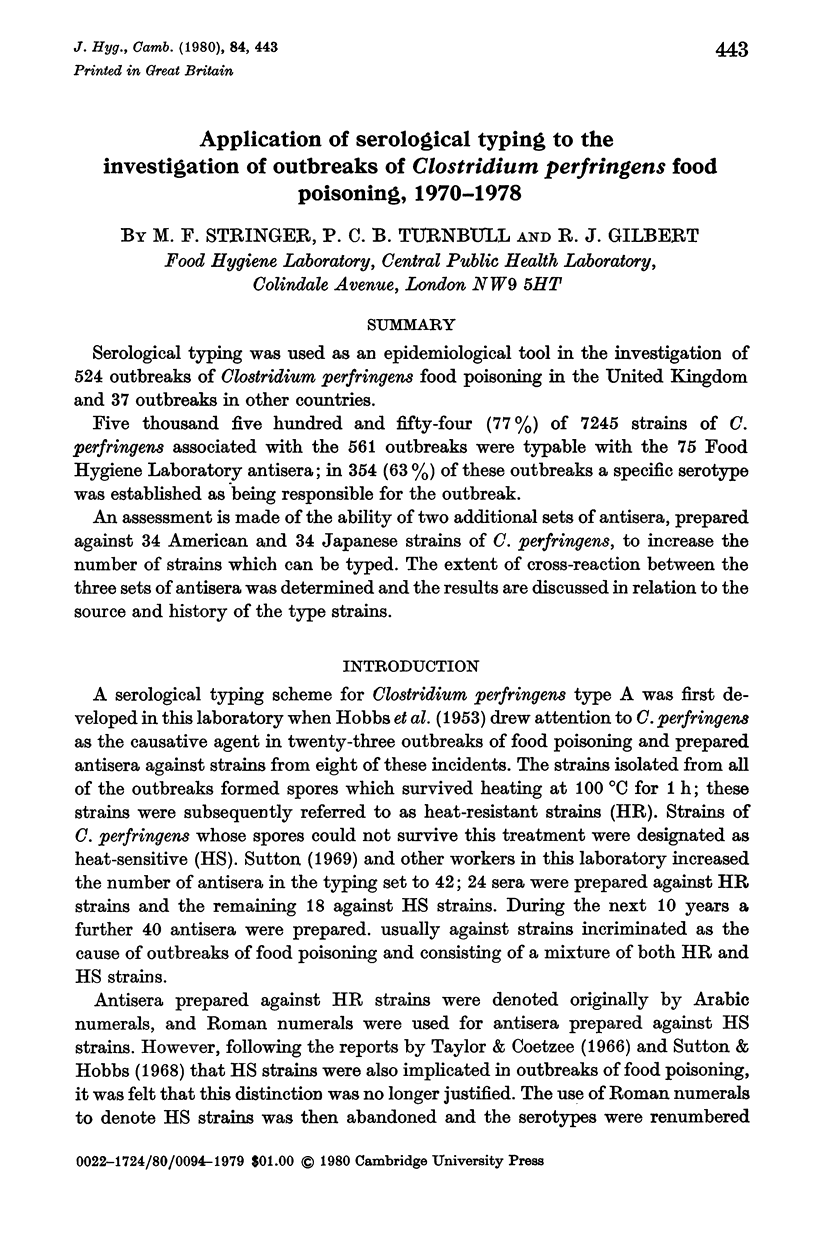
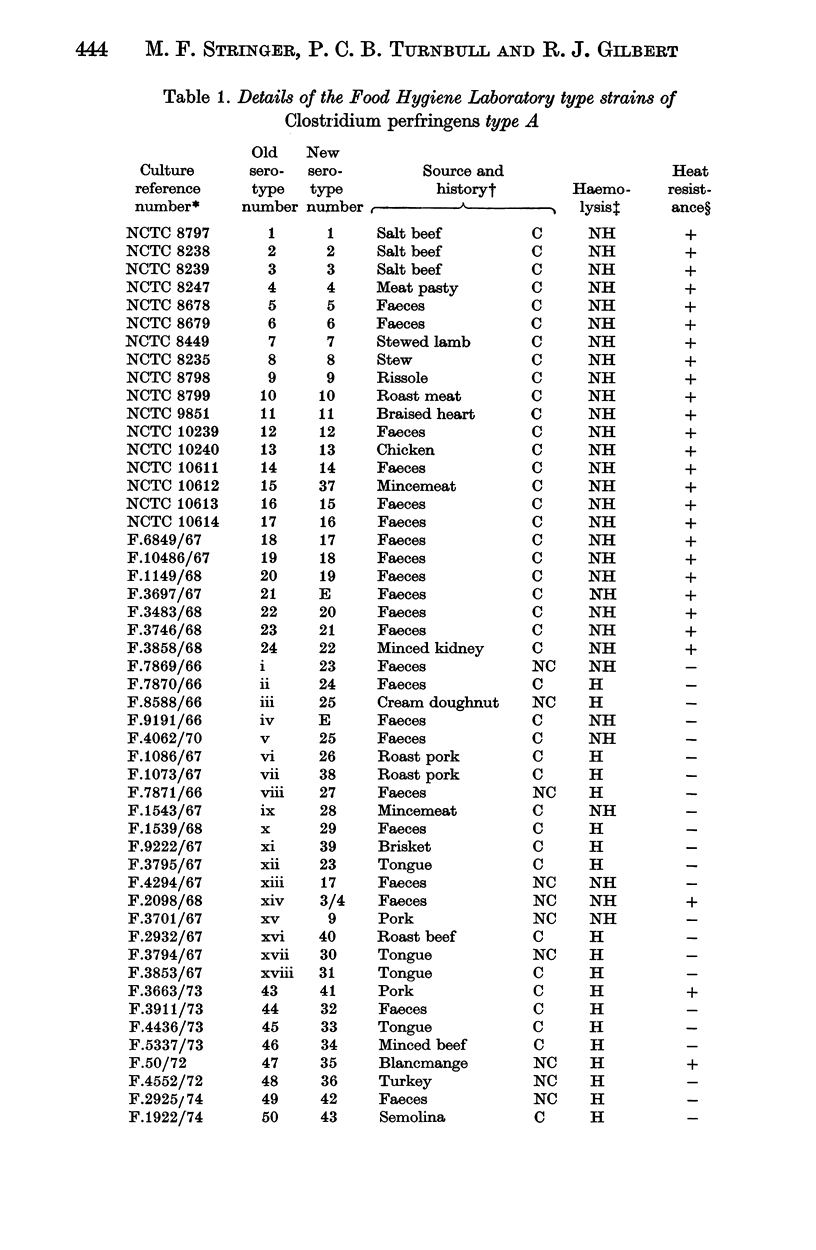
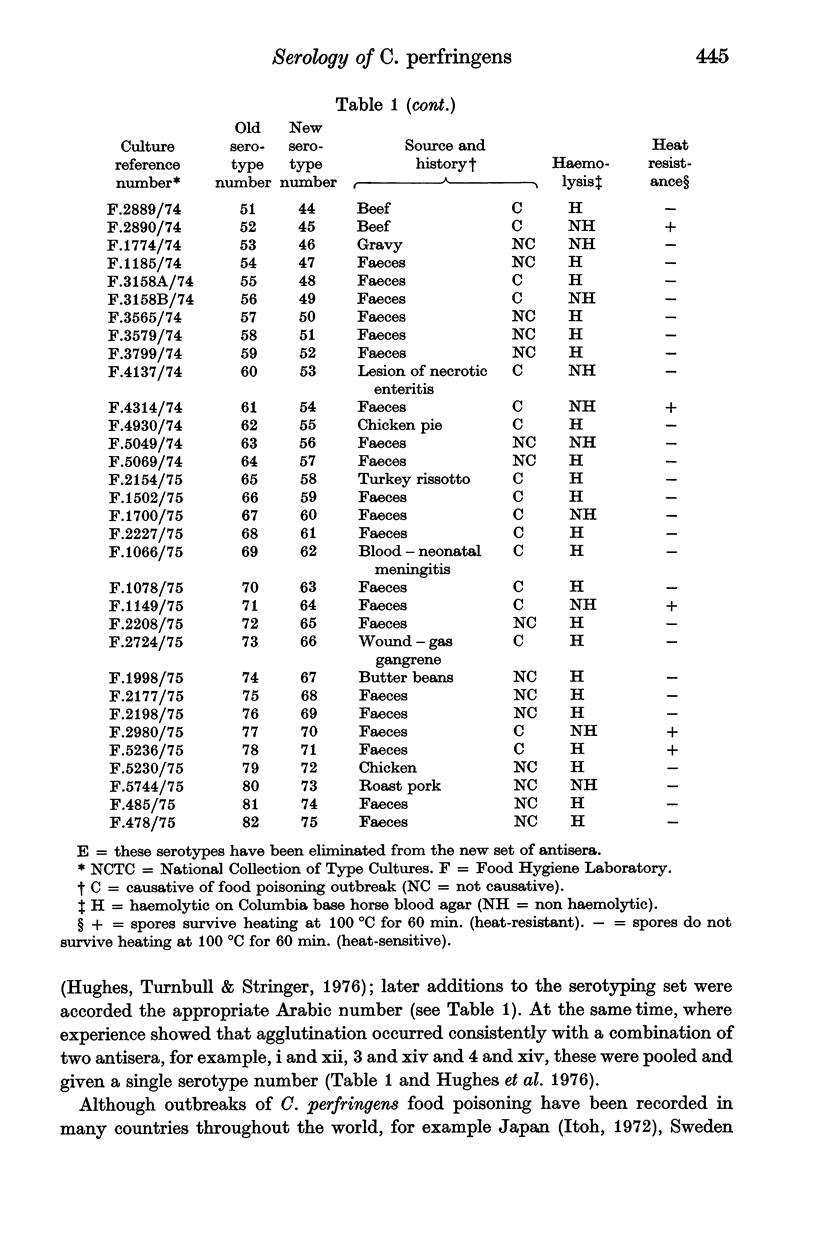
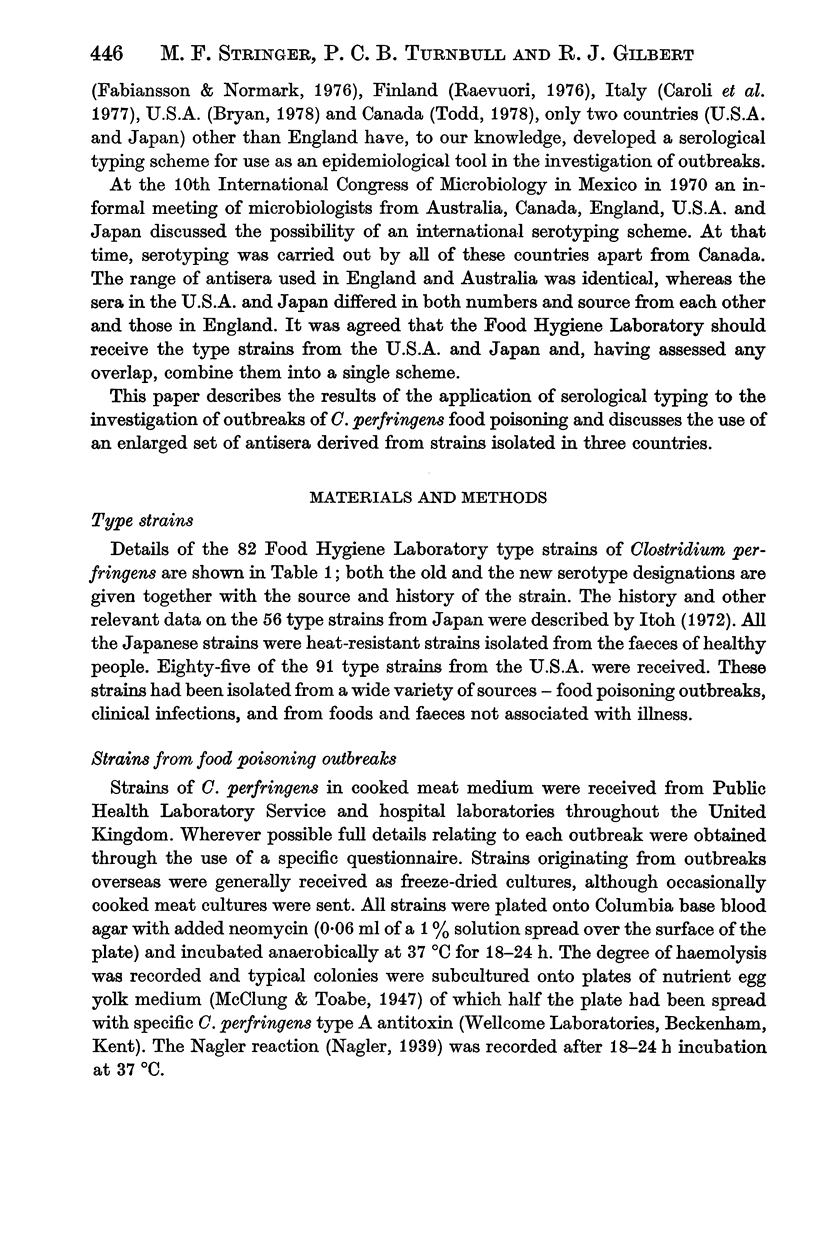
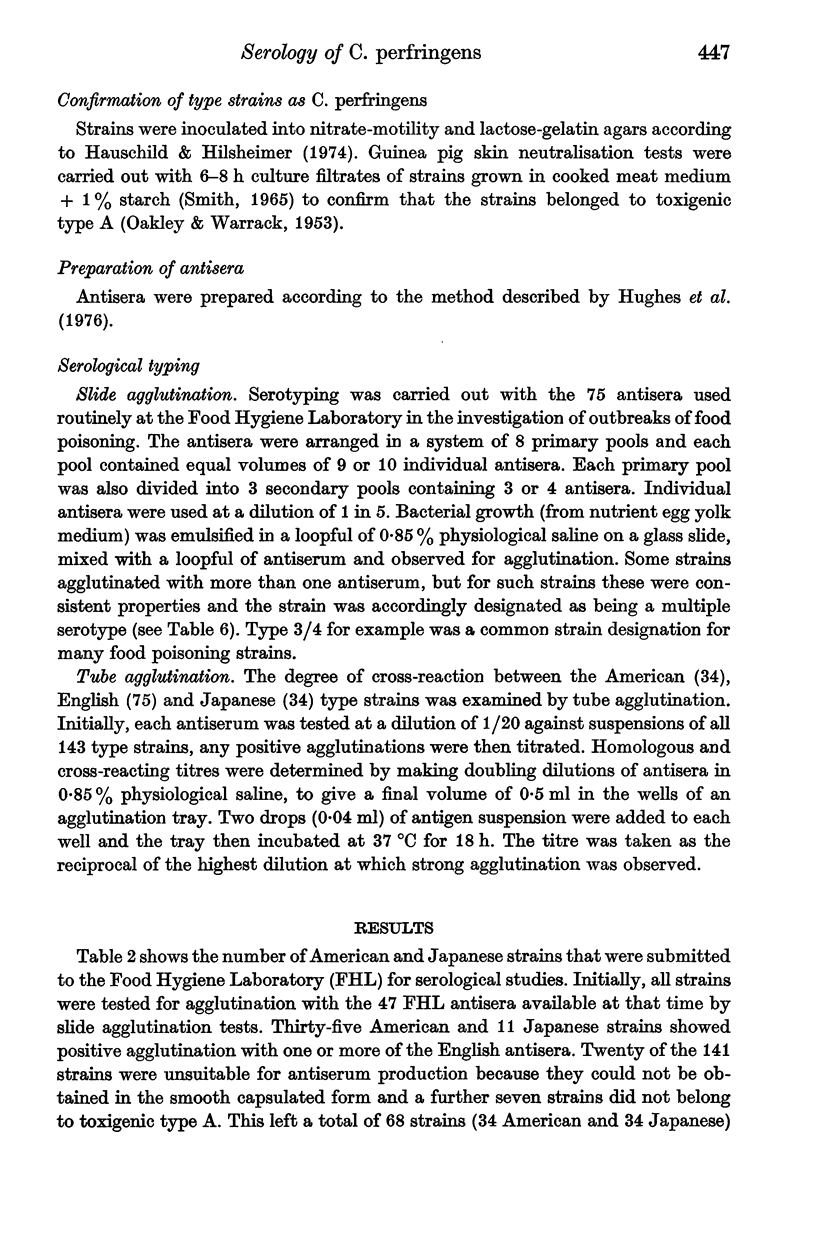
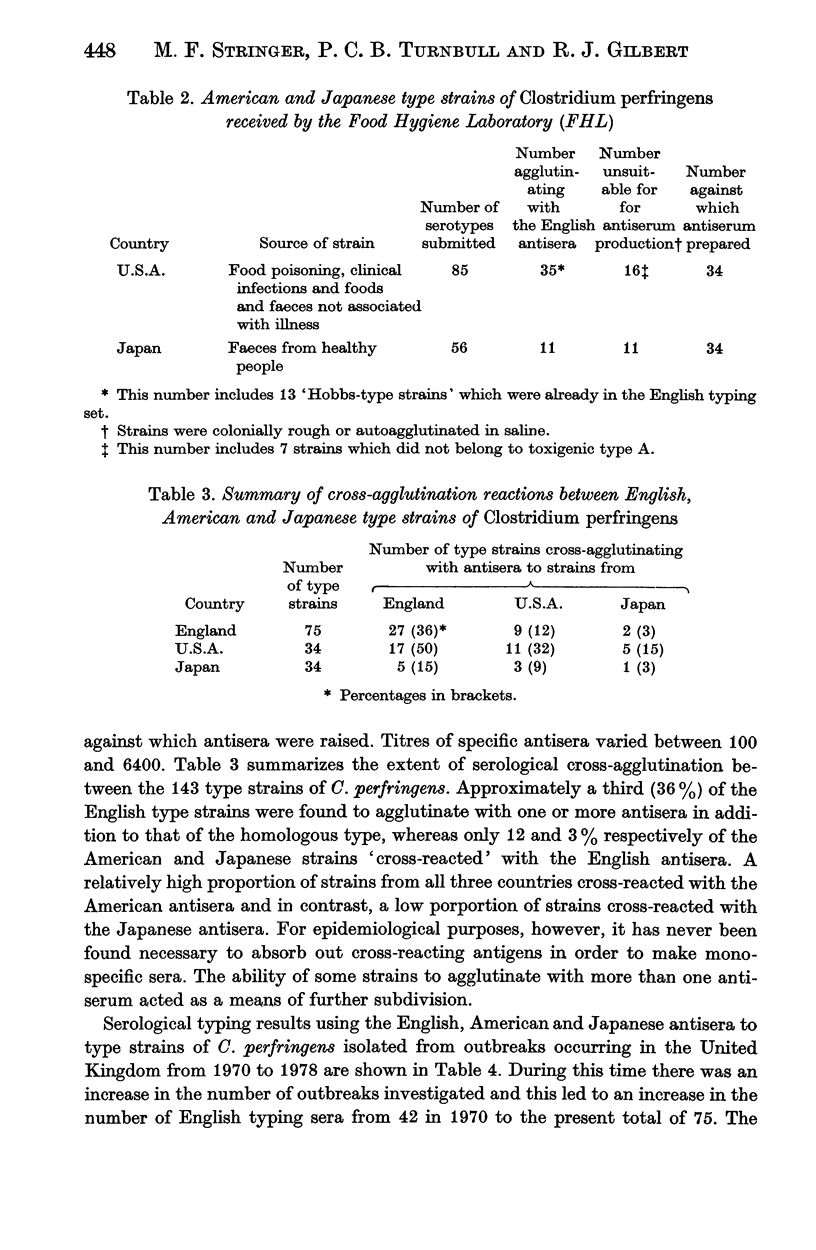
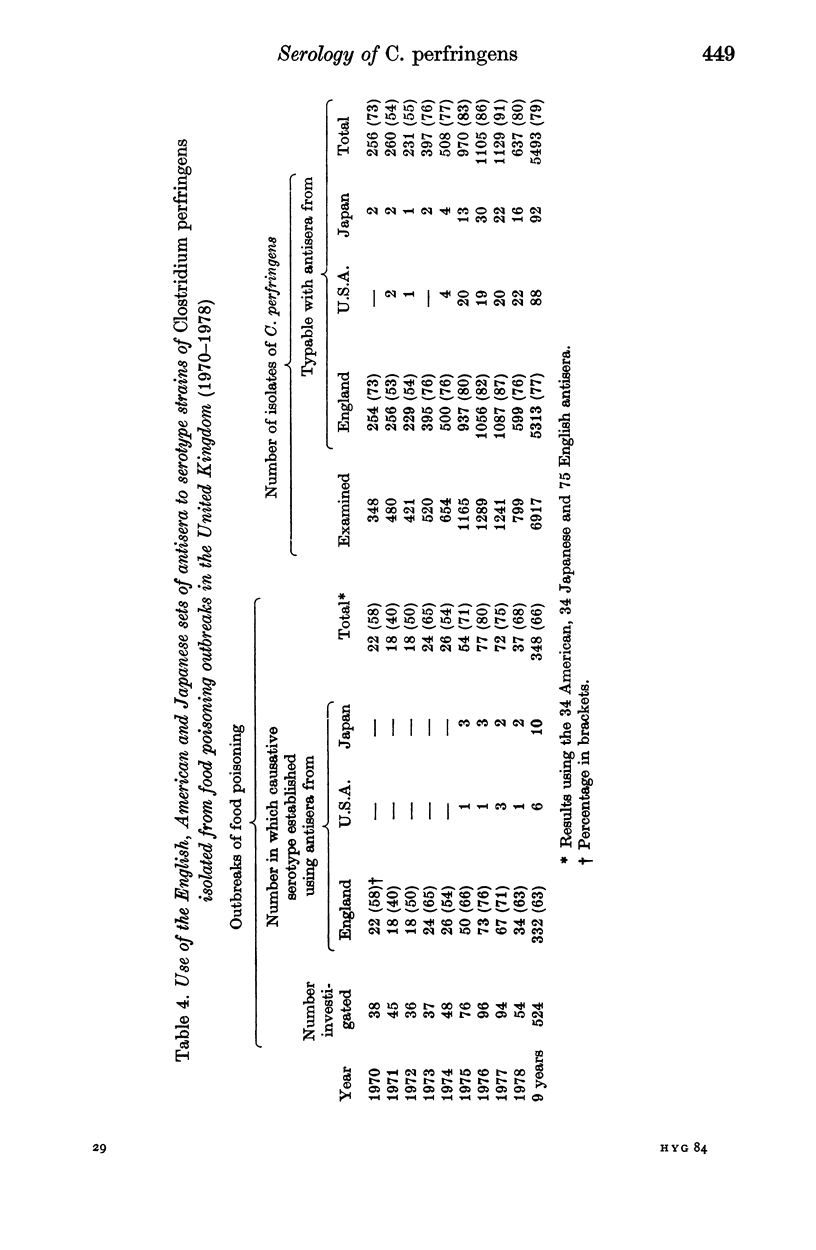
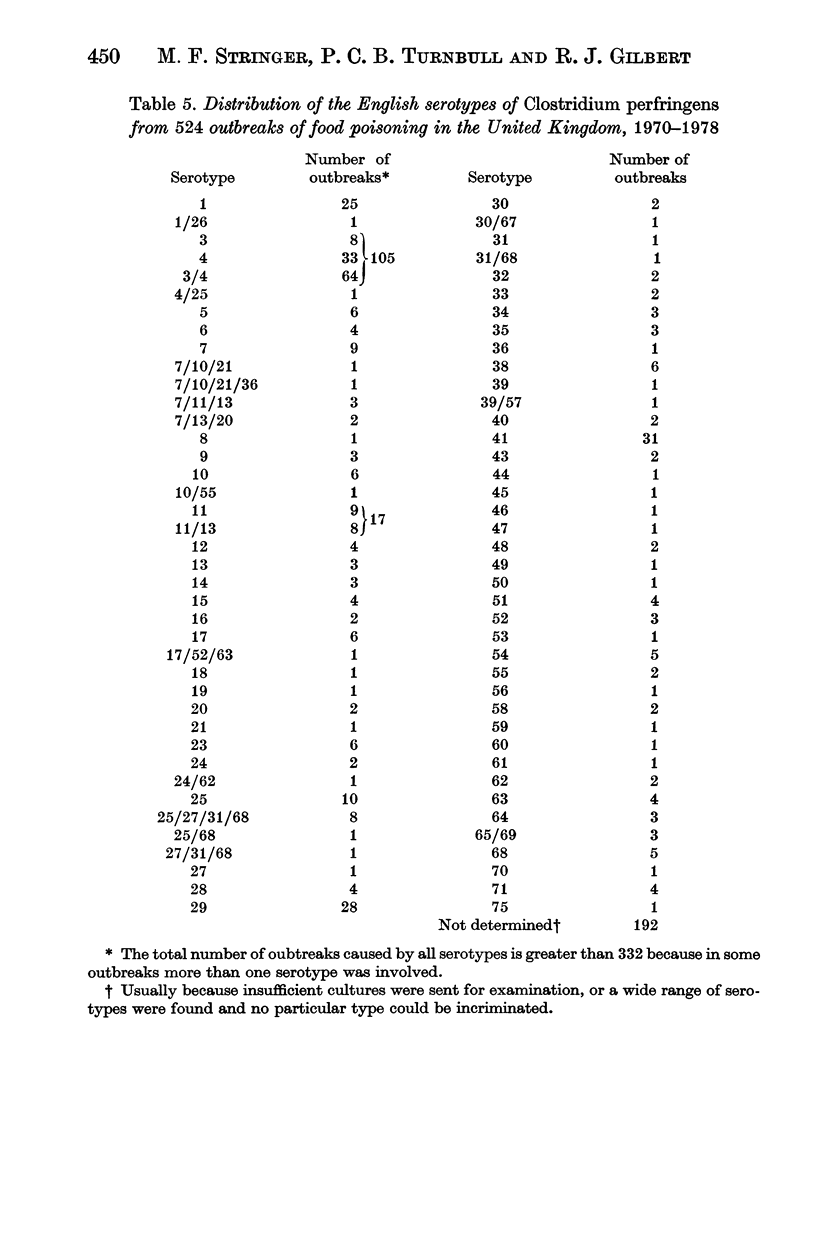
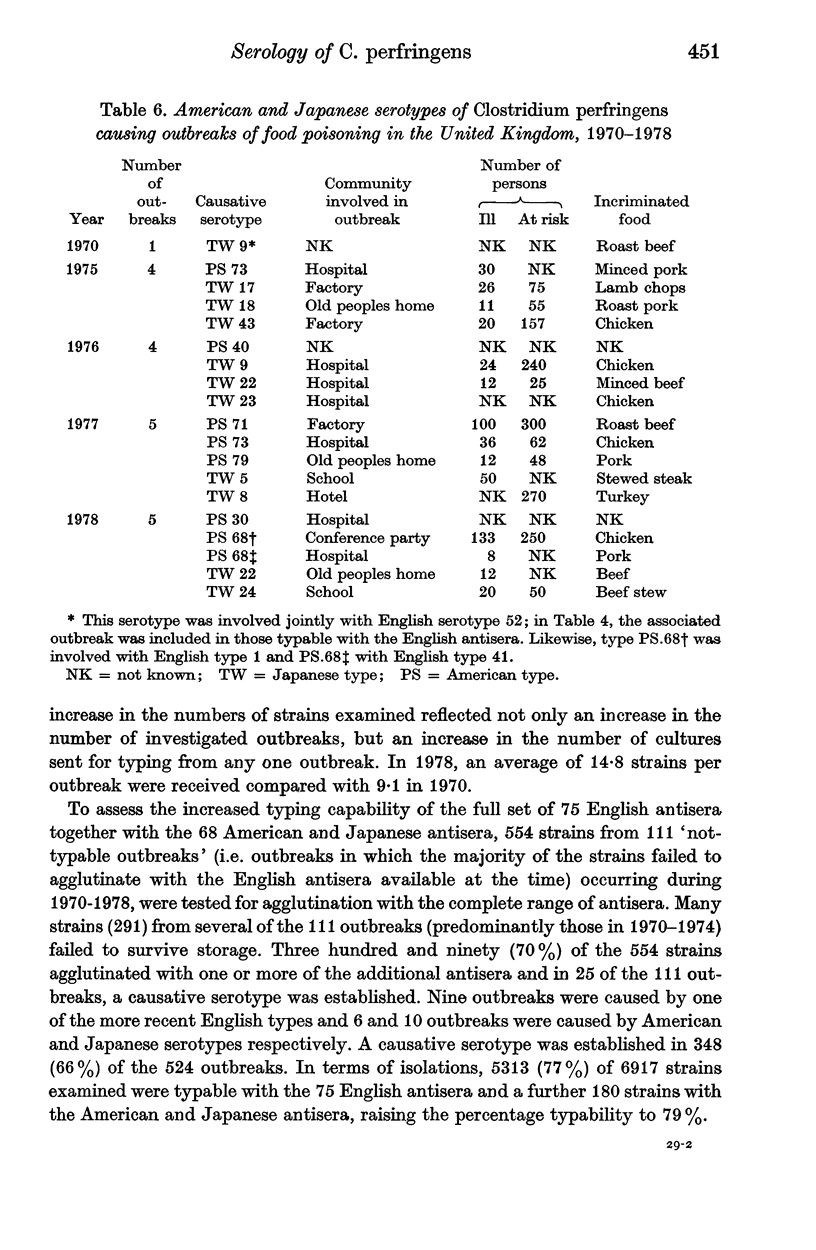
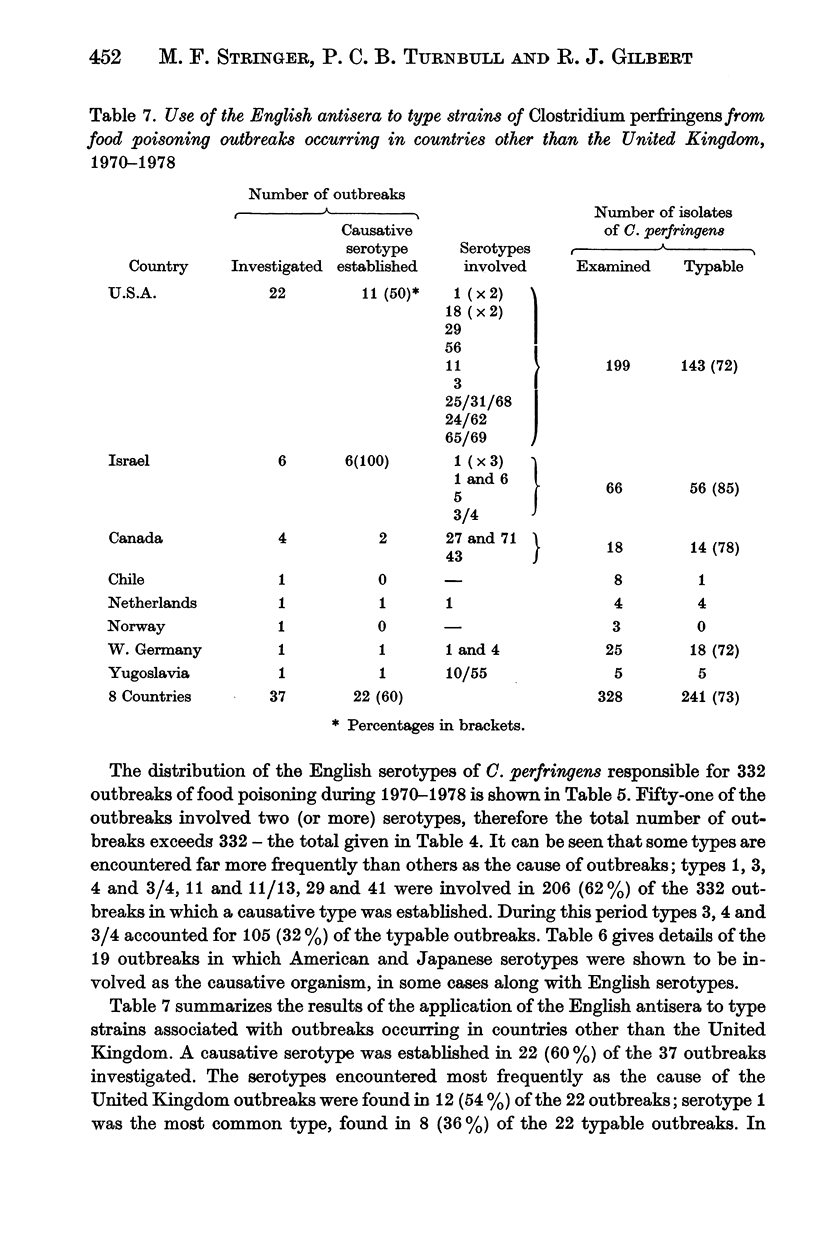
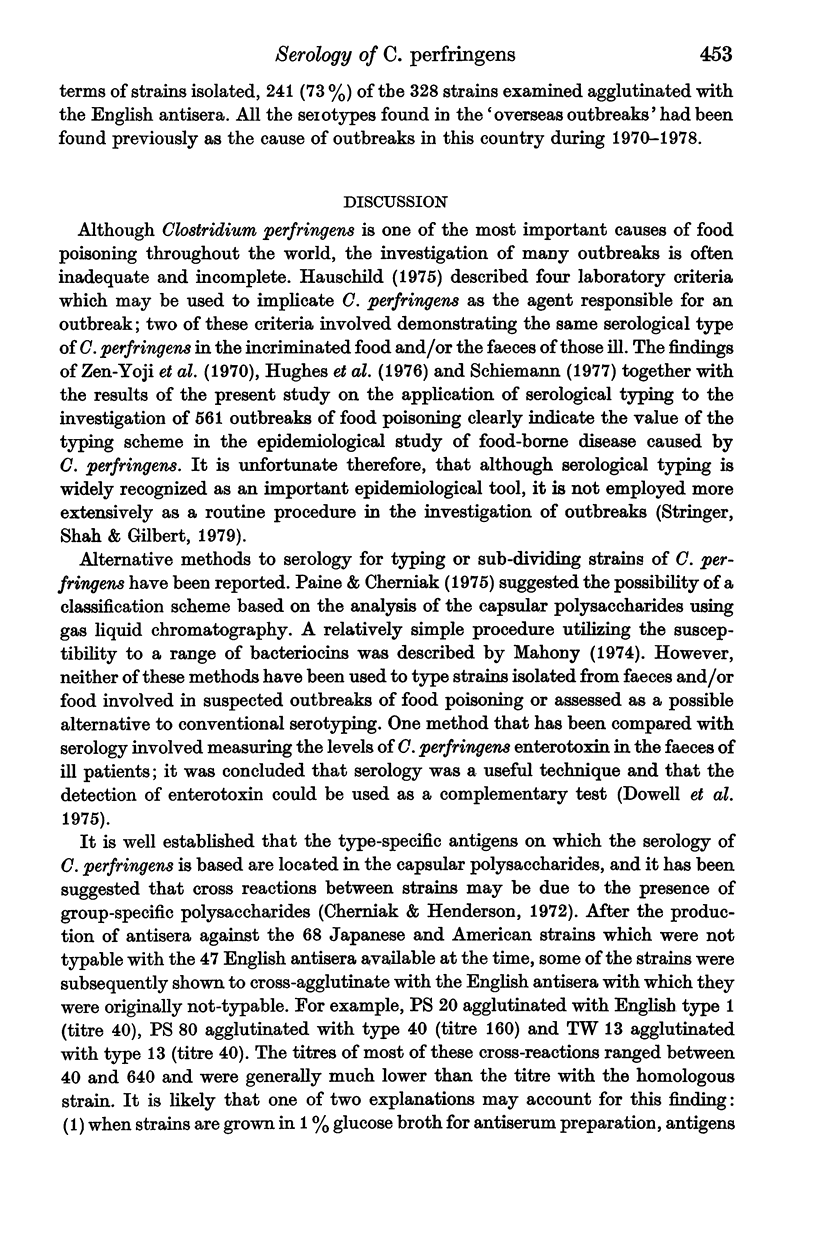
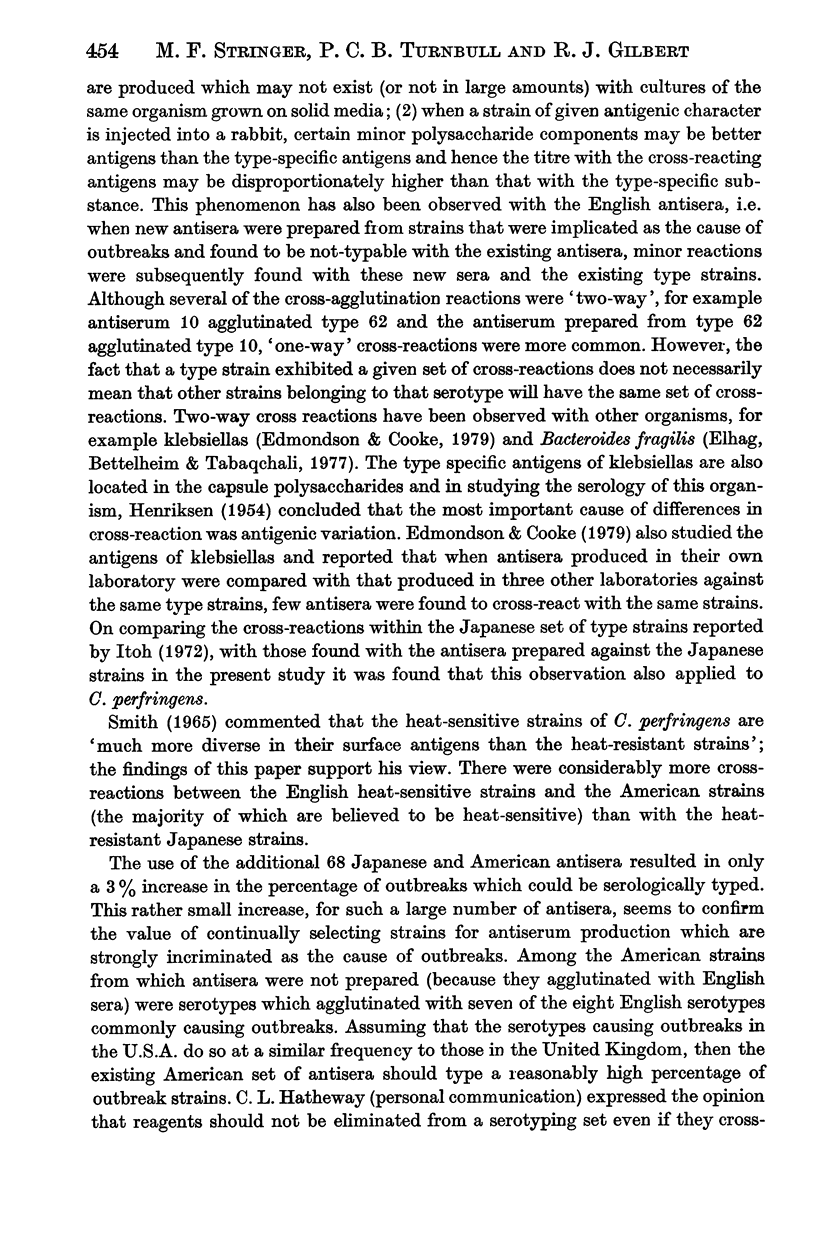
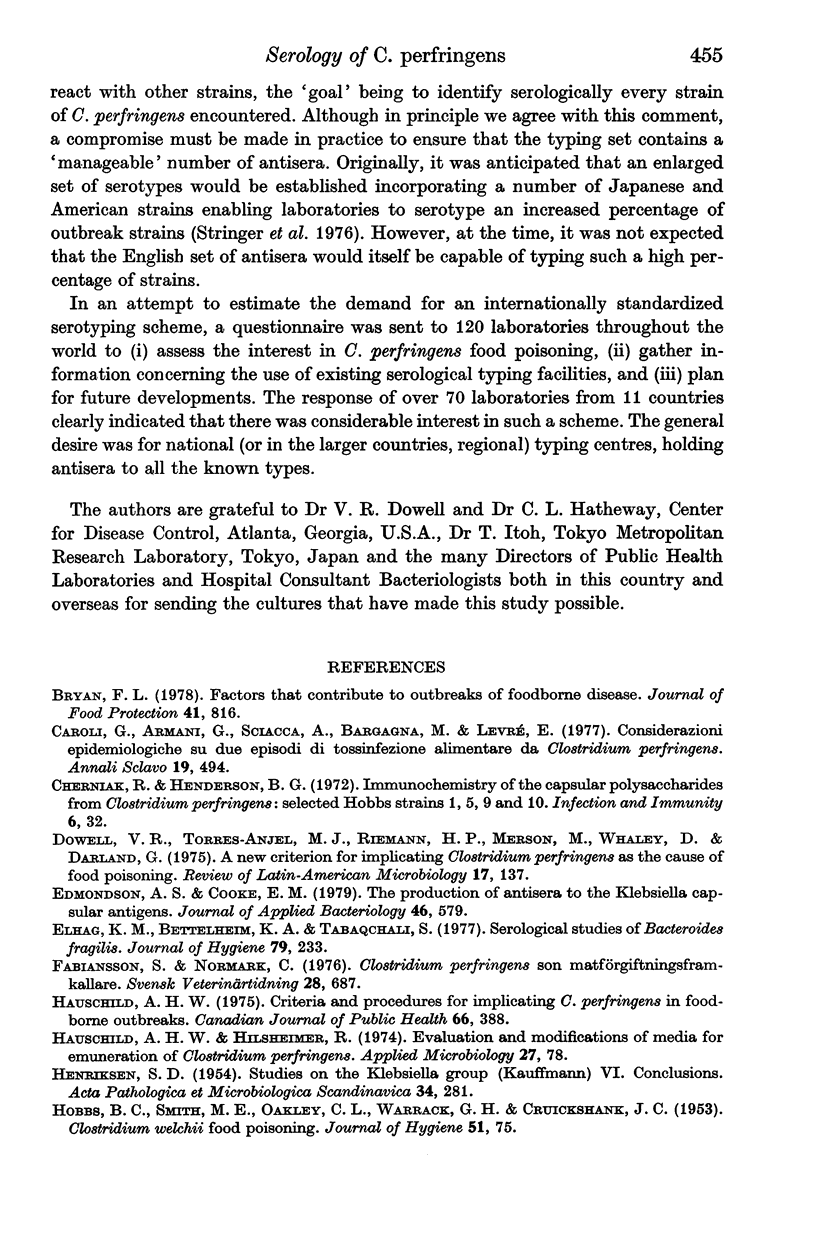
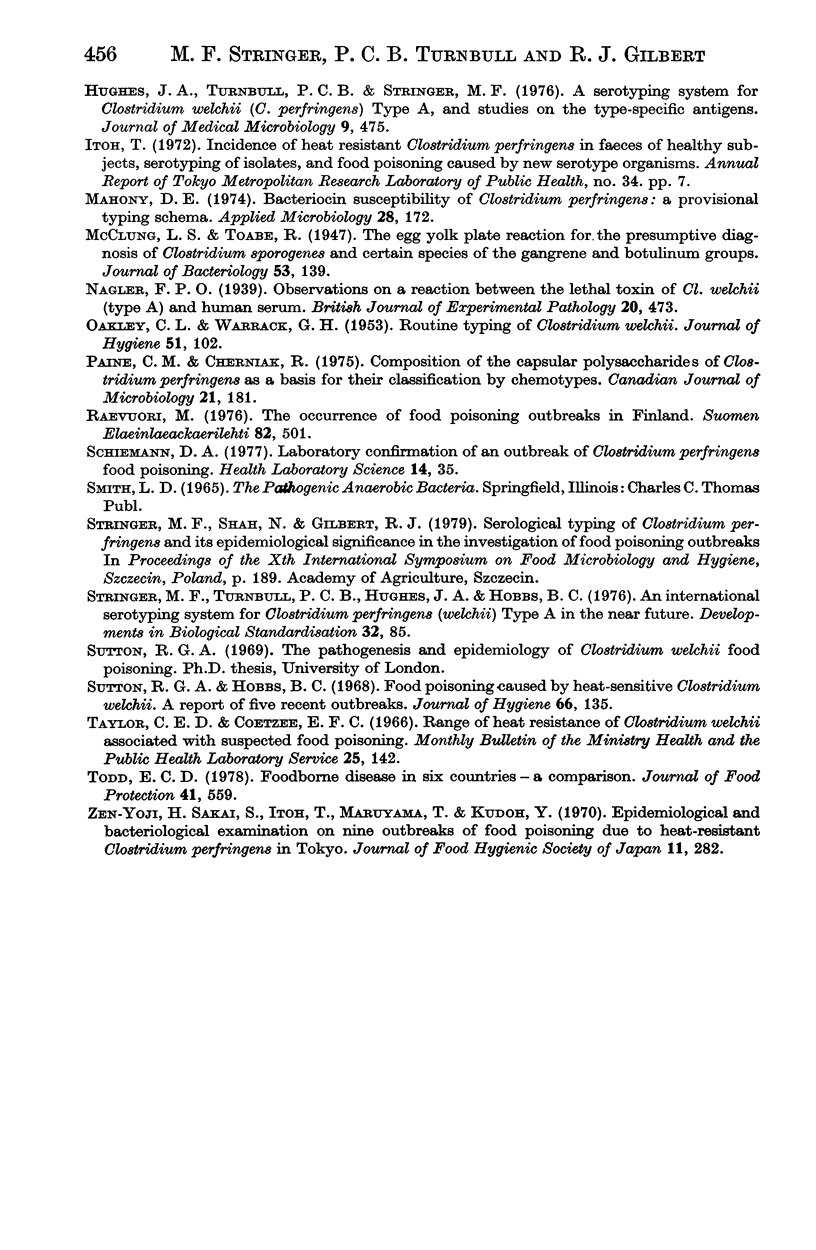
Selected References
These references are in PubMed. This may not be the complete list of references from this article.
- Caroli G., Armani G., Sciacca A., Bargagna M., Levré E. Considerazioni epidemiologiche su due episodi di tossinfezione alimentare da "Clostridium perfringens". Ann Sclavo. 1977 May-Jun;19(3):494–501. [PubMed] [Google Scholar]
- Cherniak R., Henderson B. G. Immunochemistry of the capsular polysaccharides from Clostridium perfringens: selected Hobbs strains 1, 5, 9, and 10. Infect Immun. 1972 Jul;6(1):32–37. doi: 10.1128/iai.6.1.32-37.1972. [DOI] [PMC free article] [PubMed] [Google Scholar]
- Edmondson A. S., Cooke E. M. The production of antisera to the Klebsiella capsular antigens. J Appl Bacteriol. 1979 Jun;46(3):579–584. doi: 10.1111/j.1365-2672.1979.tb00858.x. [DOI] [PubMed] [Google Scholar]
- HOBBS B. C., SMITH M. E., OAKLEY C. L., WARRACK G. H., CRUICKSHANK J. C. Clostridium welchii food poisoning. J Hyg (Lond) 1953 Mar;51(1):75–101. doi: 10.1017/s0022172400015515. [DOI] [PMC free article] [PubMed] [Google Scholar]
- Hauschild A. H., Hilsheimer R. Evaluation and modifications of media for enumeration of Clostridium perfringens. Appl Microbiol. 1974 Jan;27(1):78–82. doi: 10.1128/am.27.1.78-82.1974. [DOI] [PMC free article] [PubMed] [Google Scholar]
- Hughes J. A., Turnbull P. C., Stringer M. F. A serotyping system for Clostridium welchii (C. perfringens) type A, and studies on the type-specific antigens. J Med Microbiol. 1976 Nov;9(4):475–485. doi: 10.1099/00222615-9-4-475. [DOI] [PubMed] [Google Scholar]
- Mahony D. E. Bacteriocin susceptibility of Clostridium perfringens: a provisional typing schema. Appl Microbiol. 1974 Aug;28(2):172–176. doi: 10.1128/am.28.2.172-176.1974. [DOI] [PMC free article] [PubMed] [Google Scholar]
- McClung L. S., Toabe R. The Egg Yolk Plate Reaction for the Presumptive Diagnosis of Clostridium sporogenes and Certain Species of the Gangrene and Botulinum Groups. J Bacteriol. 1947 Feb;53(2):139–147. doi: 10.1128/jb.53.2.139-147.1947. [DOI] [PMC free article] [PubMed] [Google Scholar]
- OAKLEY C. L., WARRACK G. H. Routine typing of Clostridium welchii. J Hyg (Lond) 1953 Mar;51(1):102–107. doi: 10.1017/s0022172400015527. [DOI] [PMC free article] [PubMed] [Google Scholar]
- Paine C. M., Cherniak R. Composition of the capsular polysaccharides of Clostridium perfringens as a basis for their classification by chemotypes. Can J Microbiol. 1975 Feb;21(2):181–185. doi: 10.1139/m75-026. [DOI] [PubMed] [Google Scholar]
- Schiemann D. A. Laboratory confirmation of an outbreak of Clostridium perfringens food poisoning. Health Lab Sci. 1977 Jan;14(1):35–38. [PubMed] [Google Scholar]
- Stringer M. F., Turnbull P. C., Hughes J. A., Hobbs B. C. An international serotyping system for Clostridium perfringens (welchii) type A in the near future. Dev Biol Stand. 1976;32:85–89. [PubMed] [Google Scholar]
- Sutton R. G., Hobbs B. C. Food poisoning caused by heat-sensitive Clostridium welchii. A report of five recent outbreaks. J Hyg (Lond) 1968 Mar;66(1):135–146. doi: 10.1017/s0022172400041000. [DOI] [PMC free article] [PubMed] [Google Scholar]
- Taylor C. E., Coetzee E. F. Range of heat resistance of Clostridium welchii associated with suspected food poisoning. Mon Bull Minist Health Public Health Lab Serv. 1966 Jun;25:142–144. [PubMed] [Google Scholar]


